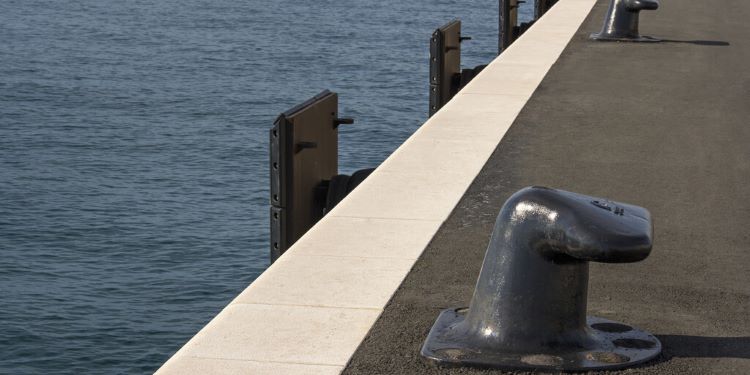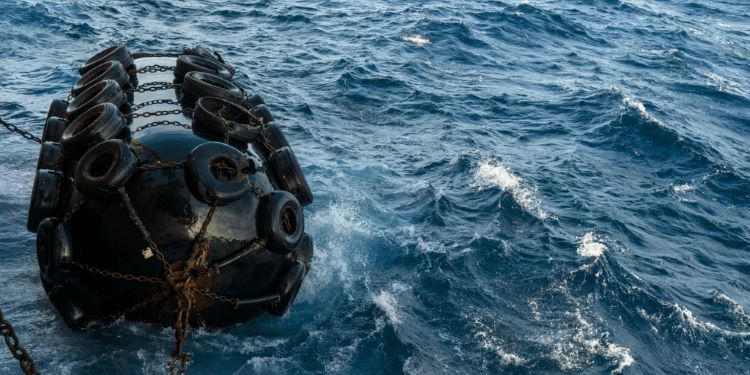By equipping your boat with the correct marine fendering type, you’re ensuring maximum protection and longevity. Fenders for boats are available in many styles but you must apply the right one that’s suited to your unique requirements. Otherwise, you run the risk of unnecessarily exposing your boat to impact damage and other complications.
Fenders for boats are commonly manufactured in plastic or rubber. But which one is most suitable for your ideal fendering application? In this post, we’re going to explore both plastic and rubber marine fendering - including the key similarities and differences, to real-life examples of how they can both be used.
That way, when you’re ready to invest in marine fendering applications for your boat, you can make a more well-informed decision.
We’ll cover:
RECAP: What Are Marine Fenders?
Plastic Marine Fendering
Rubber Marine Fendering
Our Verdict: Which One is Better?
RECAP: What Are Marine Fenders?
Fenders for boats are applied to ensure that impact damage is minimised during docking - and in other collisions too. When docking, boats inevitably collide with the dockside itself. Without fendering, the impact would be much harsher on the hull (and the dock) and there’d likely be lasting damage to both.
Marine fenders cushion the impact so that boats can dock safely and preserve their condition. When docked, fendering stops boats from rubbing against the dockside or other boats if they’re tied together. Again, without fendering, this rubbing would cause lasting damage that could see your boat needing time out of the water.
Fenders protect all boat types - from tug boats to leisure cruisers. There’s no one-size-fits-all approach that works for marine fendering, it must be tailored to the unique needs of each vessel. Boats of different sizes and weights naturally need varying protection levels.
So, what works for one boat may not necessarily be guaranteed to work for yours. It's essential to choose the correct fender type for your vessel. Also, you must regularly maintain your fendering once applied. During regular checks of the boat, if your fenders are damaged or worn, they’re easily replaceable to improve protection and save money in the long term.
Not only do you need to choose the right type - but you must also choose suitable manufacturing materials. As mentioned, fenders for boats are commonly either plastic or rubber. If selected incorrectly, you could invest in a full range of fendering that’s completely inadequate. So, while you might think your boat is fully protected, you’d likely need to reinvest to ensure impact and damage is minimised.

Plastic Marine Fenders
Plastic fenders are widely regarded as being lower in strength capability and can only moderately absorb kinetic energy from boats. Straight away, this raises concerns - especially as you want to ensure that your fenders provide the best protection possible.
They’re capable of protecting boats and varying mooring conditions, however, this may differ depending on the point of collision.
Due to their low energy absorption rate, they’re more well suited to smaller applications. Of course, smaller vessels don’t require the same force to be stopped. For example, a large cargo tanker will require a lot more force to be stopped than a small day cruiser or leisure yacht.
Most plastic boat fenders are manufactured using recycled material - allowing them to still be robust but also kinder to the environment in the long term.
Advantages of Plastic Fendering
Versatile: plastic fenders are available in a variety of applications. Typically, they are manufactured using a soft polymer that is designed with a special formulation.
Resistant: they’re resistant to chemical and biological hazards. They won't rot, disintegrate or lose their quality.
Easy to assemble: they’re non-complex and very easy to fix on your boat, pylon, or even a jetty. That being said, replacing damaged fendering applications is an easy process too.
Cost-effective: they offer suitable protection (for smaller boats) and performance for a much lower cost than other boat fenders.
Hard-wearing but gentle on the vessel exterior: plastic fenders are gentle to the exterior of a boat. They won’t leave marks, indentations or lasting damage to the vessel whilst protecting the exterior of the boat.
UV stabilised: although plastic fenders may not have the highest strength quality, they're still designed for longevity. They’re UV-stabilised to prevent hardening and cracking caused by the constant exposure to the sun’s rays.
Drawbacks of Plastic Fendering
Low impact resistance: plastic marine fenders aren’t designed to withstand high impact collisions. For larger vessels, unpredictable weather and extreme tidal conditions, these fenders won’t uphold their strength.
Medium absorption rate: the kinetic energy absorption rate is lower than rubber alternatives. The overall impact damage is likely to be greater in comparison to other protective fenders.
Dangerous chemicals: some are manufactured using harmful chemicals. Careful research and consideration are required to ensure that your materials aren’t harming the marine environment.

Rubber Marine Fenders
Out of all manufacturing materials, rubber marine fenders are the most robust. They’re commonly used to produce high-quality, durable fender applications that are suitable for a wide range of requirements.
Rubber marine fenders possess excellent absorption capabilities - even in the most extreme conditions. They’re extremely versatile and provide maximum protection to a boat’s hull - that way, during docking and other collisions, all impact is cushioned efficiently.
Rubber fenders for boats are completely customisable to unique needs and requirements. From cell and cone to arch and pile, marine rubber fenders are available in a wide array of types. Each unique style has its own purpose and characteristics. Varying types of rubber fender are often used together - for example, cell and pile fenders.
You must consider all necessary factors when choosing the right fendering applications. The size and weight of your boat and different mooring conditions are all factors that need to be taken into account to ensure maximum protection.
Advantages of Rubber Fendering
Withstand extreme forces: they’re durably designed to withstand extreme forces and are suitable for a wide range of circumstances and boat types. For example, tug boats and large tankers.
Customisable: they can be tailored to the needs and requirements of any boat. Plus, they’re available in a wide range of different types and styles, increasing their flexibility and versatility.
Soft reaction force: Rubber fenders are designed to withstand high impact. The soft reaction force helps cushion any impact and ensure that your vessel preserves its condition.
Adaptable to tides: No matter the force of the tide, rubber fenders remain in the correct position for optimal protection. They're designed for adaptation and a variety of marine conditions.
Longevity: when maintained correctly, they’re long-life products. Also, they prolong the longevity of your vessel itself. Poorly designed or broken fenders inflict damage onto boats and the docksides. Regular maintenance of rubber fenders will keep all impact cushioned adequately.
Reliable: while all fendering manufacturing materials are reliable, rubber is the most durable and robust. Therefore, you can rely on rubber fendering to provide a higher level of protection for longer periods.
Drawbacks of Rubber Fendering
Increased costs: for a truly bespoke, high-quality rubber fendering application, the initial cost will be greater than other cheaper alternatives. However, with the correct care, they have a much longer product life than other manufacturing materials. Therefore, although the short-term costs will be more, you’ll be saving money in the long term.
Aesthetics: For day boat and leisure yacht owners, the aesthetics of your boat is a high priority. Whereas tug boat owners aren’t bothered about the appearance, performance is more important. Rubber fendering is highly regarded as maximum performance - rather than looking pretty.
Our Verdict
As mentioned throughout the post, choosing the correct marine fendering type and manufacturing material is vitally important. Cutting corners and a lack of consideration will leave your boat wide open to damage and you could be faced with rising repair costs and time out of the water. Not to mention, the need to further reinvest in fendering applications too.
When choosing the correct fendering to meet your needs and requirements, you should consider the following:
The size of your boat. The bigger your boat is, the higher the absorption rate you’ll require to ensure that no lasting damage occurs on impact.
The weight of your boat. Heavier boats naturally have a greater impact force than smaller ones. Therefore, choosing a fender type with a soft reaction force is imperative.
Typical mooring conditions. Collisions with the dockside or rubbing against other boats when tied up can easily damage your boat’s hull. With the correct fendering, you’ll be protected against all mooring conditions.
Both materials are durable and provide adequate protection - to vessels that are well suited to each type. For example, plastic fendering is suitable for smaller boats and impacts, therefore, it’s an unsuitable choice for larger vessels like cargo tankers. With that in mind, rubber fendering is more robust and durable.
Also, it’s versatile and available in various styles and types. Therefore, it’s easily customisable to suit your individual needs and requirements. Marine rubber fendering products are high-quality and are built to last. Not only are they long-lasting themselves, but they also prolong the longevity of your boat.
For us, there can only be one winner - marine rubber fendering. At Walker Rubber, we realise the importance of choosing the correct fendering type and material - we’re vastly experienced in providing the marine industry with high-quality fendering applications. So, should you need help in choosing the ideal type for your boat or mooring conditions, look no further.
Discover The Perfect Fender Solution For Your Vessel
If you're unsure of how to select the right material and where to start with customisations, look no further. In our FREE downloadable Ebook, we cover everything you need to know about marine rubber fendering - the benefits, customisations available, different types and more.
It’s all in there for you to take in - however, we’re just adding the finishing touches to it. So, in the meantime, for any questions and queries that you may have, please don’t hesitate to get in touch with our expert team. We look forward to hearing from you!